Brisbane in your pocket - The Pocket Brisbane tourist guide
By JOL Admin | 21 January 2014
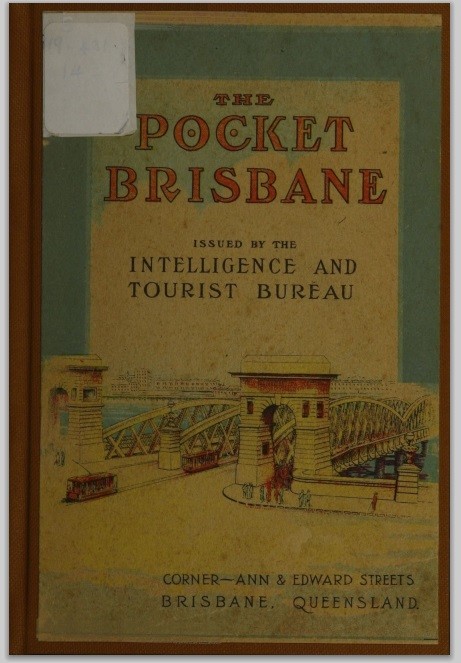
It's 1928. You're a tourist, just arrived in the beautiful city of Brisbane. You ask yourself - What attractions does Brisbane offer? Where can I get the best views of the city? What forms of public transport are available? Are there excursions? Where can I see a film or go to a play?
Never fear, the Intelligence and Tourist Bureau have all the answers and more in one little book – The Pocket Brisbane – published annually between 1910 and 1929.
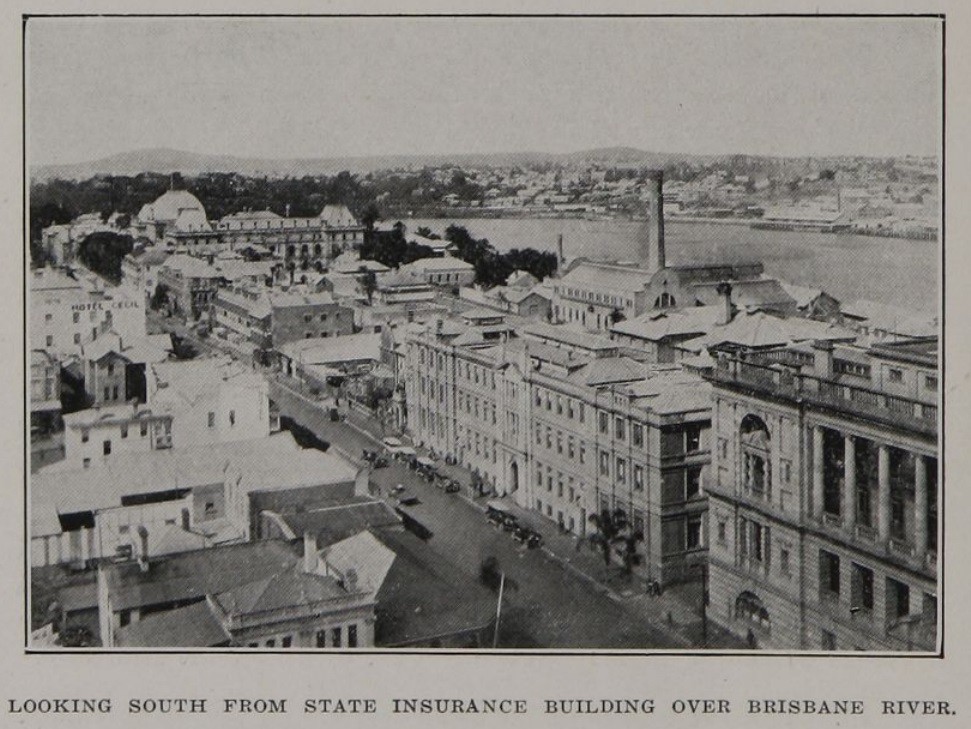
"Looking south from Stare Insurance Building over Brisbane River". From The Pocket Brisbane, 1928 edition
The 1928 edition of The Pocket Brisbane lists a variety of places of interest for the curious traveller. One major attraction, not to be missed, is the Botanic Gardens with its "avenues of palms and other sub-tropical umbrageous foliage". Pocket Brisbane also points out the Botanic Gardens features aviaries of Queensland birds and a miniature zoo with emus, cassowaries, kangaroos, wallabies, monkeys and deer. Light refreshments can be purchased at the Garden's kiosk and recitals by brass bands are given every Sunday afternoon in the Band Rotunda.
A number of Brisbane’s public buildings are also highlighted, including Parliament House, the Supreme Court, Central Railway Station and the Customs House.
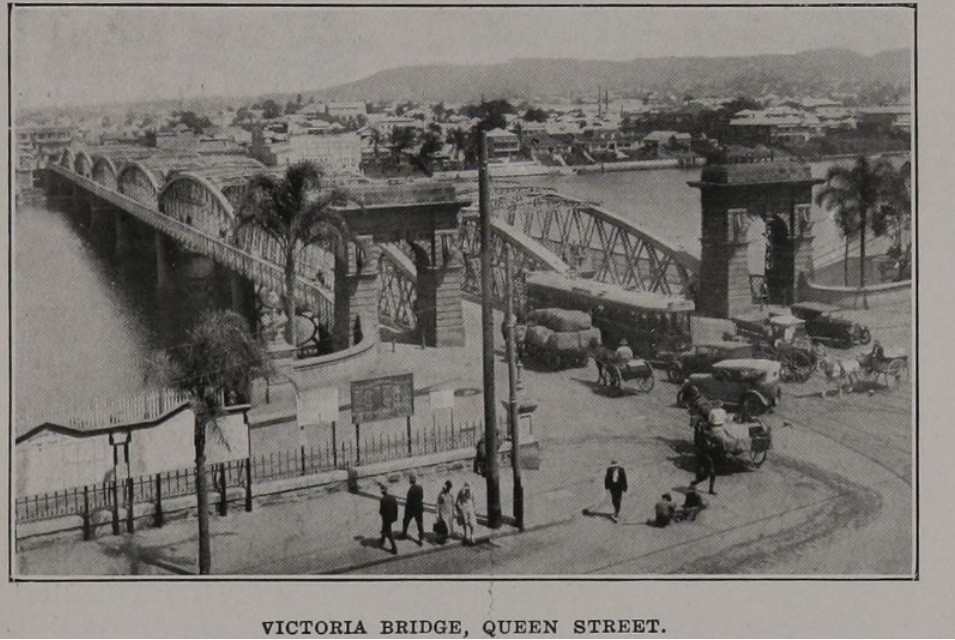
For the more adventurous, consider a self-guided tour around Brisbane, Pocket Brisbane lists several. Directions are provided on how to get there and the form of transport needed (walking, trams, trains, buses and/or motor car). For example, to enjoy the scenic views from Eildon Hill in the suburb of Windsor, the guide advises -
"Take Lutwyche, Chalk Street, or Windsor tram from corner of George and Adelaide streets, opposite Railway Offices) to Constitution road, or motor bus from Duncan street, Valley. Then a fifteen minutes' walk, and on reaching the crest of the hill the visitor gazes upon one of the finest panoramas imaginable. Cost by tram, 3d. each way."
For the best views of Brisbane, the guide suggests a number locations including One Tree Hill (Mt Coot-tha), Hamilton Hill, Albion Heights and White's Hill. Some public buildings also are listed as offering excellent vantage points - South Brisbane's Town Hall, Parliament House (George St), Telegraph Chambers (Queen St), Trades Hall (Edward St), the State Insurance Buildings (George St) and Executive Buildings (George St).
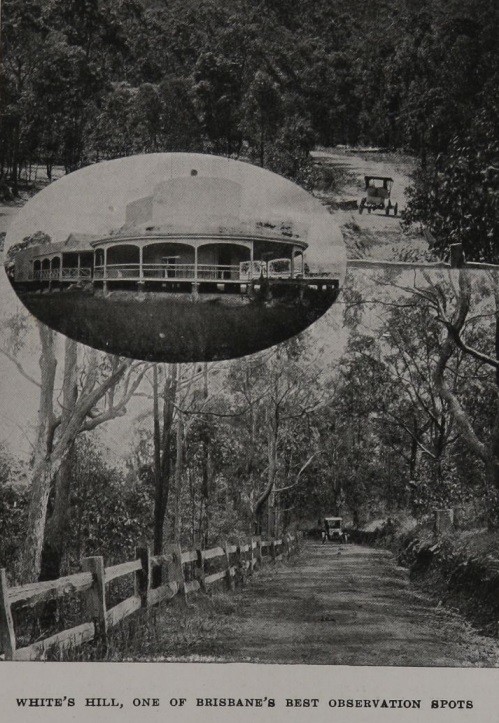
Pocket Brisbane lists a variety of cultural pursuits designed to please the most discerning tourist. The Queensland Museum (situated on Bowen Bridge Road in Bowen Hills in 1928) is described among the many places of interest as "being filled with a very interesting collection of exhibits". Brisbane theatres and other forms of indoor entertainment are included also. For theatre goers wanting drama or opera, a night at His Majesty's Theatre on Queen Street is just the ticket; for less highbrow theatre you can’t go passed vaudeville at the Empire Theatre on Albert Street; and if you prefer to trip the light fantastic, the Trocadero in Melbourne Street, South Brisbane is recommended.
If you are one of the fortunate few to own a motor car, Pocket Brisbane offers some important advice to visiting motorist from interstate.
"Motorists entering Queensland by road should report to the nearest Police Station after crossing the border. On arrival in Brisbane go straight to the Main Roads Commission Office and obtain a temporary permit, which lasts for two months. Should the visitor remain for a longer period in Queensland, registration is compulsory...It is also necessary to notify the police (Traffic Department, Old Fire Station, Ann Street), produce driving license, and register interstate number of car."
Lastly, Pocket Brisbane seeks to reassure you, the visiting tourist, that dying during your Brisbane holiday is unlikely. The guide states that the "salubrity of the climate of Brisbane is emphasised by the lowness of the death rate...the death rate in 1926 was only 10.63 per 1,000 inhabitants". However to cover all eventualities, a list of Brisbane hospitals and cemeteries is also included.
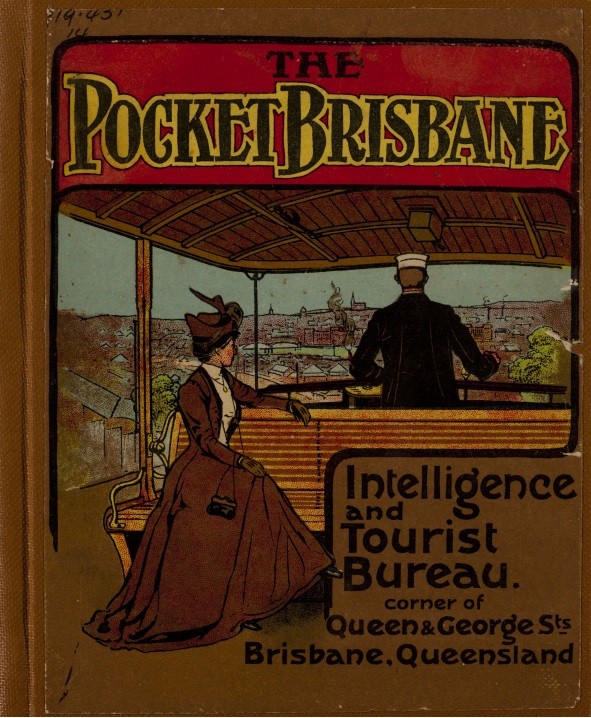
Comments
Your email address will not be published.
We welcome relevant, respectful comments.